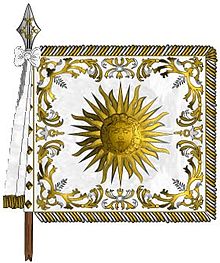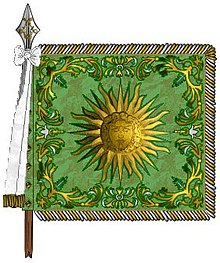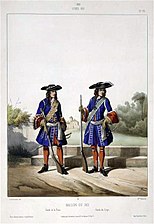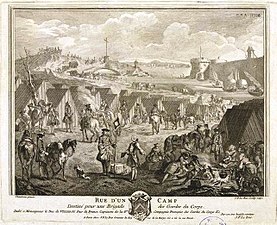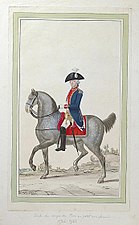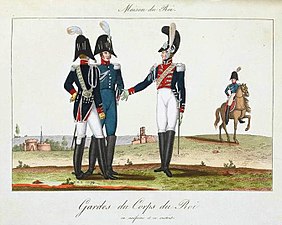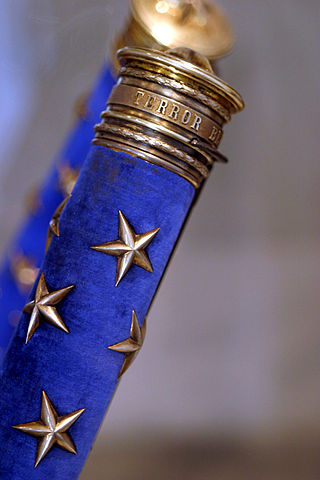
Marshal of France is a French military distinction, rather than a military rank, that is awarded to generals for exceptional achievements. The title has been awarded since 1185, though briefly abolished (1793–1804) and for a period dormant (1870–1916). It was one of the Great Officers of the Crown of France during the Ancien Régime and Bourbon Restoration, and one of the Grand Dignitaries of the Empire during the First French Empire.
A Colonel General was an officer of the French army during the Ancien Régime, the French Revolution, the Napoleonic era and the Bourbon Restoration.

The Scottish Guards was a bodyguard unit founded in 1418 by the Valois Charles VII of France, to be personal bodyguards to the French monarchy. They were assimilated into the Maison du Roi and later formed the first company of the Garde du Corps du Roi.
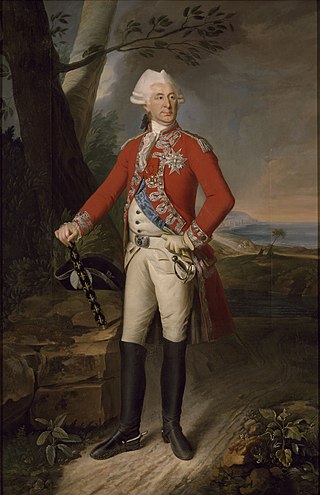
Charles Eugène Gabriel de La Croix de Castries, marquis de Castries, baron des États de Languedoc, comte de Charlus, baron de Castelnau et de Montjouvent, seigneur de Puylaurens et de Lézignan was a French marshal. He was the son of Joseph François de La Croix de Castries, marquis de Castries, and his second wife, Marie-Françoise de Lévis de Charlus.

The House of Harcourt is a Norman family, and named after its seigneurie of Harcourt in Normandy. Its mottos were "Gesta verbis praeveniant", "Gesta verbis praevenient", and "Le bon temps viendra ... de France".

Marie Victoire Sophie de Noailles, Countess of Toulouse, was a French noble and courtier. Her second spouse was Louis Alexandre de Bourbon, Count of Toulouse, the youngest legitimized son of King Louis XIV of France and his maîtresse-en-titre, Madame de Montespan.

The military governor of Paris is a post within the French Army. He commands the garrison of Paris and represents all the military based in Paris at high state occasions. He is also responsible for organizing major national ceremonies such as the Bastille Day military parade down the Champs-Élysées.

Charles-Albert-Marie Costa, Marquis de Beauregard was a French historian and politician. He also fought in the Franco-Prussian War. His works include a trilogy on Charles Albert of Sardinia.

The Château de Maintenon is a château, developed from the original castle, situated in the commune of Maintenon in the Eure-et-Loir département of France. It is best known as being the private residence of the second spouse of Louis XIV, Madame de Maintenon.

Louis-Auguste Juvénal des Ursins d'Harville, Count of Harville was a French military officer and politician in late 18th-century France. A Divisional General in the French Revolutionary Wars and the Napoleonic Wars, he was present at the Battle of Jemappes on 6 November 1792 and led the Reserve Division at the subsequent Siege of Namur.

César Phoebus d'Albret, comte de Miossens, was a French soldier, a Marshal of France under Louis XIV, and a court gallant. He was also a cousin of the marquise de Montespan. His faithful attachment to Anne of Austria and Cardinal Mazarin during the Fronde, rather than any military talent, motivated his designation as a marshal of France. He set aside the name of Miossens for the grander name of Albret.

The Galerie des Batailles is a gallery occupying the first floor of the Aile du Midi of the Palace of Versailles, joining onto the grand and petit appartement de la reine. 120 m (390 ft) long and 13 m (43 ft) wide, it is an epigone of the grand gallery of the Louvre and was intended to glorify French military history from the Battle of Tolbiac to the Battle of Wagram.

The House of Potier was a noble house in Ancien Régime France. Members of the Potier family were Nobles of the Robe who gained their prominence through serving the King of France.

Gabriel-Jacques de Salignac de La Motte styled vicomte de Saint-Julien later marquis de Fénelon, was an 18th-century French military commander and diplomat.

Claude-Louis-Raoul de La Châtre, otherwise known as Louis, duc de La Chastre was an aristocratic French military commander, diplomat and politician of the 18th and 19th centuries.

Charles de La Vieuville first styled Marquis of La Vieuville but later created 1st Duke of La Vieuville was an important French noble and Superintendent of Finances of France from 1623 to 1624 and once again from 1651 to 1653.
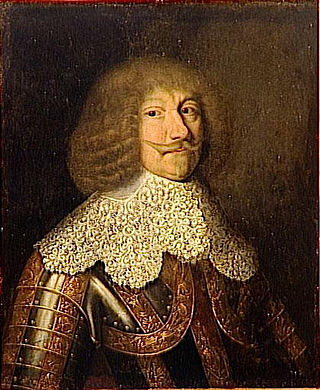
Nicolas de L'Hôpital, marquis and later duc de Vitry, seigneur de Nandy et de Coubert, often referred to as Maréchal de Vitry was a French noble, military leader, friend of Louis XIII and Marshal of France (1617).

The Bastille or Bastille Saint-Antoine was completed in 1383. The commander of the Bastille was its governor, and was previously called capitaine.



